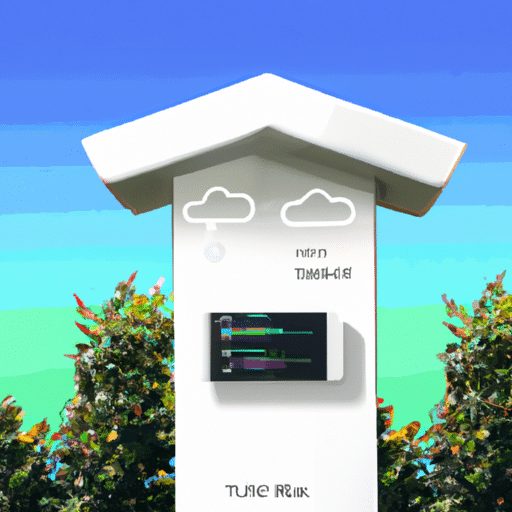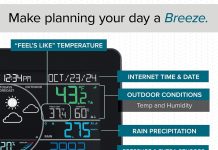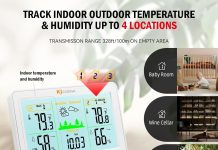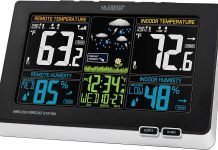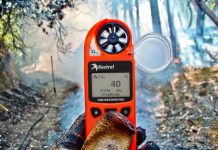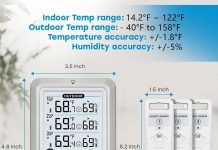Operating a home weather station may seem like a daunting task for those without technical know-how, but fear not! In this article, we will explore whether you need any specific skills to navigate the world of home weather stations. Whether you’re a weather enthusiast or simply curious about tracking local conditions, we’ve got you covered. So, grab a cup of coffee and get ready to discover just how easy it is to operate a home weather station, regardless of your technical background.
Review contents
Overview
In today’s fast-paced world, the ability to monitor and predict weather conditions is becoming increasingly important for many people. Whether you’re a gardening enthusiast, a outdoor adventurer, or simply someone who wants to stay prepared for any weather event, owning a home weather station can be incredibly beneficial. Home weather stations are convenient, user-friendly devices that allow individuals to measure weather data right in their own backyard. In this comprehensive article, we will guide you through the world of home weather stations, explaining their various types, installation and setup processes, power requirements, calibration and maintenance, data interpretation, connecting with other devices, and troubleshooting.
Understanding Home Weather Stations
Home weather stations are compact, all-in-one devices that accurately measure weather conditions in the immediate vicinity of your home. These stations typically consist of a set of sensors and a display unit that provides real-time weather data. The sensors measure various factors such as temperature, humidity, wind speed, and precipitation, and transmit this information wirelessly to the display unit. By understanding the functionalities and components of a home weather station, you can make informed decisions about which model is best suited for your needs.
Benefits of Owning a Home Weather Station
Owning a home weather station provides numerous benefits for both personal and practical applications. Firstly, it allows you to have access to accurate weather data specific to your location, giving you a better understanding of the weather conditions in your area. This information can be particularly useful for activities such as gardening or planning outdoor events. Additionally, a home weather station enables you to track weather patterns over time, allowing you to make better predictions about future conditions. This can be valuable for outdoor enthusiasts, farmers, and anyone else who is affected by weather changes. Lastly, owning a home weather station allows you to become more self-sufficient and less reliant on external weather forecasts, giving you greater control over your daily routines and activities.
Types of Home Weather Stations
Digital Weather Stations
Digital weather stations are the most common type of home weather stations available in the market today. These stations typically consist of a set of sensors that measure temperature, humidity, wind speed and direction, and rainfall. The data collected by these sensors is wirelessly transmitted to a display unit that provides real-time weather readings. Digital weather stations are popular due to their ease of use, accurate measurements, and wide range of features. They are suitable for most users, whether you are a beginner or an experienced weather enthusiast.
Analog Weather Stations
Analog weather stations, also known as traditional or mechanical weather stations, provide a more classic approach to weather monitoring. These stations consist of analog instruments such as mercury thermometers, hygrometers, wind vanes, and rain gauges. Analog weather stations require manual reading of the instruments and do not provide real-time data or wireless capabilities. However, they can still be a charming and functional addition to your home, offering a nostalgic appeal and reliable measurements.
Installation and Setup
Choosing the Right Location
To ensure accurate and reliable measurements, it is crucial to choose the right location for your home weather station. The ideal location is an open area, away from buildings, trees, or other structures that could potentially affect wind patterns or block sunlight. Additionally, the weather station should be mounted at a height that is representative of the surrounding environment. By selecting an appropriate location, you can obtain the most accurate weather data possible.
Mounting the Weather Station
Once you have identified the perfect location for your weather station, it’s time to mount it securely. Most weather stations come with mounting hardware, such as brackets or poles, to facilitate installation. Follow the manufacturer’s instructions carefully to ensure proper installation and stability. It is essential to mount the sensors at the correct height and orientation for accurate readings. Take into consideration factors such as wind direction and sunlight exposure when positioning the station.
Connecting Sensors and Display Unit
After mounting the sensors, it’s time to connect them to the display unit. This process typically involves pairing the sensors with the display unit using wireless communication. Follow the specific instructions provided by the manufacturer to establish a successful connection. Once the sensors and display unit are linked, you should start receiving real-time weather data on the display.
Power Requirements
Home weather stations are usually powered by batteries or solar panels. Battery-powered stations offer portability and ease of setup, while solar-powered stations eliminate the need for regular battery replacements. Consider your location and the availability of sunlight when choosing between battery or solar-powered options. It is advisable to keep spare batteries on hand in case of power outages or extended cloudy periods.
Calibration and Maintenance
Calibrating Sensors
To ensure accurate readings, it is crucial to calibrate the sensors of your home weather station periodically. Most weather stations offer calibration settings for each sensor, allowing you to adjust them according to known reference points. Calibration procedures may vary depending on the model, so consult the user manual or contact the manufacturer for specific instructions. Regular calibration will help maintain the integrity of your weather data.
Performing Regular Maintenance
Routine maintenance is important to keep your home weather station functioning optimally. This includes inspecting the sensors and display unit for physical damage, cleaning the sensors to remove dirt or debris, and checking the batteries or solar panels for proper functioning. Periodic maintenance will ensure that your weather station continues to provide accurate and reliable data for years to come.
Data Interpretation
Understanding Weather Measurements
To fully utilize the capabilities of your home weather station, it is essential to understand the various weather measurements it provides. Common measurements include temperature, humidity, atmospheric pressure, wind speed and direction, and rainfall. Familiarize yourself with the units of measurement used for each parameter and how they relate to weather patterns in your region. This knowledge will allow you to interpret the data and make informed decisions based on current and forecasted weather conditions.
Analyzing Weather Data
Once you have gathered a significant amount of weather data, you can start conducting meaningful analysis. Compare the data with historical weather patterns to identify trends and anomalies. Look for correlations between different weather parameters and how they impact each other. For example, you might discover that rising humidity levels often precede rainfall in your area. Analyzing weather data will help you gain insights into local weather patterns and make better predictions for future conditions.
Connecting with Other Devices
Many modern home weather stations offer the ability to connect with other devices, such as smartphones, tablets, or computers. This connectivity allows you to access weather data remotely and view it in real-time from anywhere. Take advantage of this feature to monitor weather conditions when you’re away from home or to integrate the data into other applications or systems. Check if the weather station you choose is compatible with the devices you own and follow the instructions provided for successful integration.
Troubleshooting
Occasionally, you may encounter issues with your home weather station. Common problems include inaccurate readings, connectivity issues, or display unit malfunctions. In case of any troubleshooting needs, refer to the user manual or contact the manufacturer for support. They can provide guidance on how to resolve common issues and ensure that your weather station continues to operate smoothly.
In conclusion, owning a home weather station is a valuable investment for anyone seeking to understand and monitor weather conditions in their immediate surroundings. With the right installation, calibration, and maintenance, you can rely on your home weather station to provide accurate and reliable weather data. Use the information gained from your weather station to make informed decisions, plan activities, and stay prepared for any weather event. Whether you choose a digital or analog weather station, the benefits and insights provided will enhance your understanding of the weather and its impact on your daily life.

